Mixture-of-Experts with Expert Choice Routing (NeurIPS 2022)
Zhou, Yanqi, et al. "Mixture-of-experts with expert choice routing." Advances in Neural Information Processing Systems 35 (2022): 7103-7114.
( https://arxiv.org/pdf/2202.09368 )
참고:
- https://www.youtube.com/watch?v=JyGfOlKzVqk
- https://cameronrwolfe.substack.com/p/conditional-computation-the-birth
Contents
- Overview
- (1) MoE
- (2) MoE Layer
- (3) Token-choice routing의 한계점
- (4) Proposed: Expert Choice
Overview
Mixture-of-Experts
- Layer 내부의 network를 input에 대해 부분적으로 activate
\(\rightarrow\) compuation cost 대비 많은 수의 parameter 증가 가능
( \(\because\) gating mechanism을 통한 sparse activation 덕분! 데이터당 소수의 expert만 활용하게 하여, 효율적인 계산이 가능해짐 )
MoE vs. Proposed
- MoE: “data(token)”를 expert에 핼당
- Proposed: “expert”를 data(token)에 핼당
1. MoE
Model = (1) Expert network + (2) Gating Network
- (1) Expert network: target task를 푸는 모델
- (2) Gating network: input을 어떠한 expert에 할당할지 결정하는 모델 (i.e., Router)
\(\rightarrow\) Key point: 각 expert가 서로 다른 subtask에 대해 specialize하도록!
\(y=\sum_{i=1}^n G(x)_i \cdot E_i(x)\).
- \(G(x)\): Router output
- \(E_i(x)\): Expert output
- \(y\): MoE output
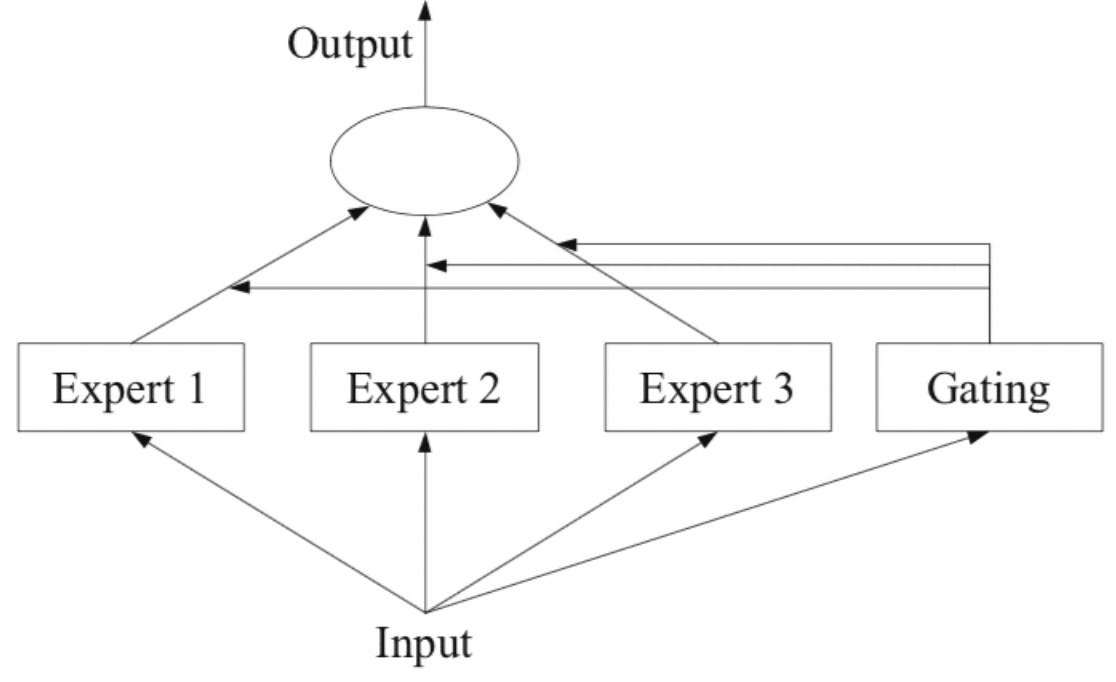
2. MoE Layer
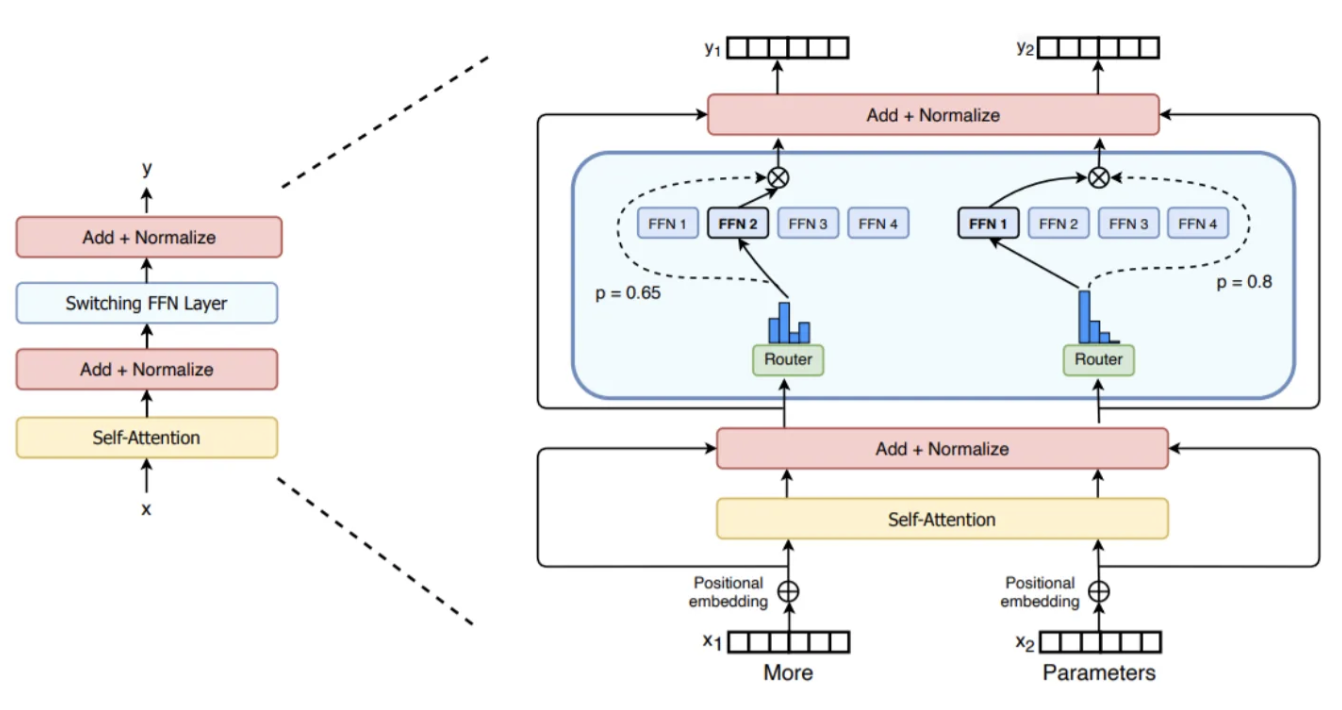
a) Conditional computation
- 데이터에 따라 network의 일부분을 활성화/비활성화
\(\rightarrow\) (parameter 수 증가 대비) computational cost 증가량 감소
b) Sparsely gated MOE layer
- MoE in deep learning
- Each expert = FFN
- Stacked LSTM 층 사이에 MOE layer 삽입
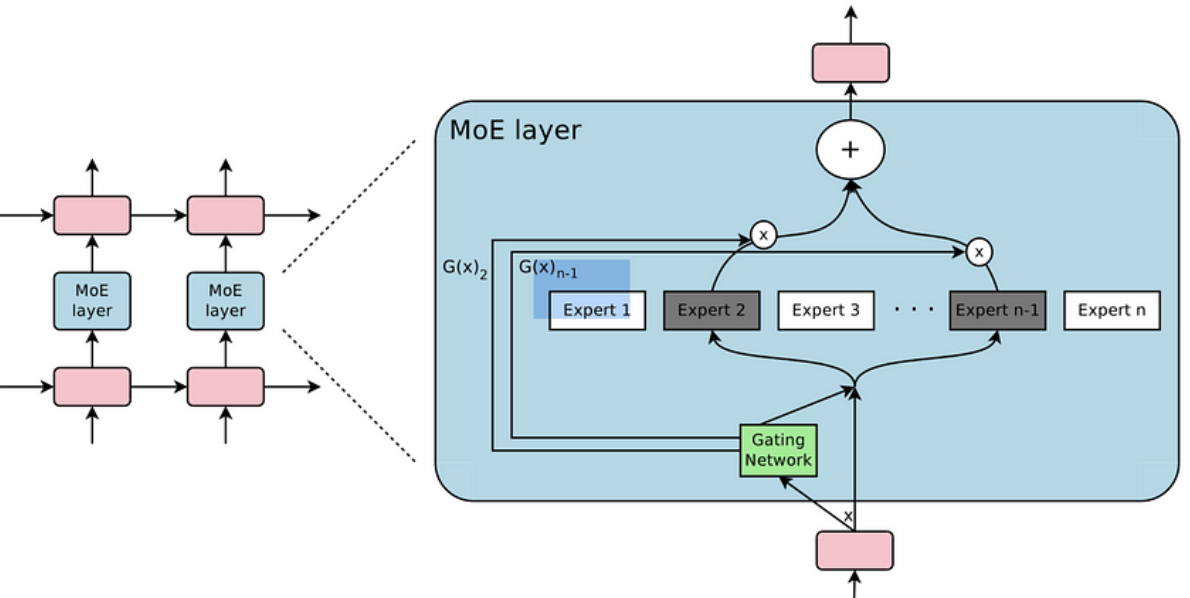
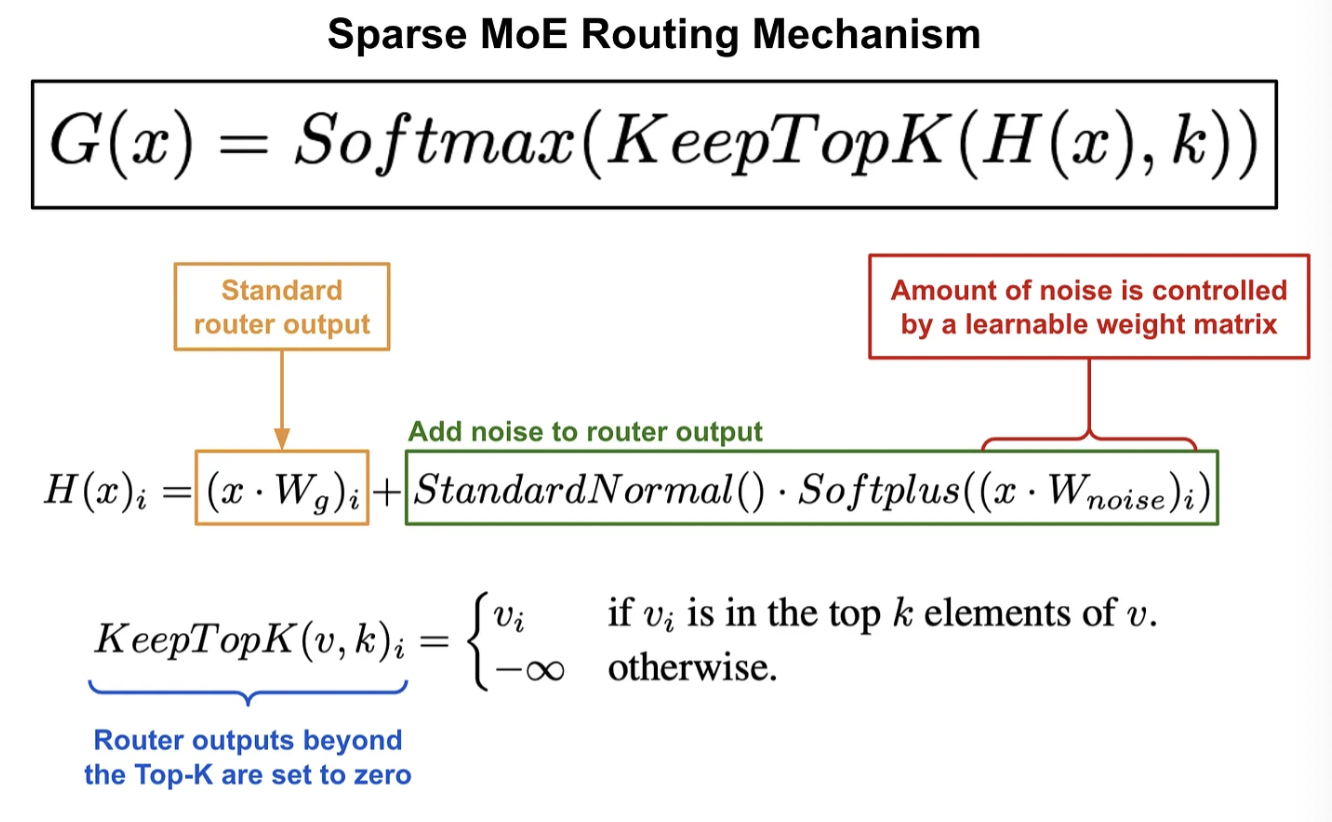
c) Balancing Expert utilization
문제점: 특정 expert에 모든 데이터가 할당되어버린다면…?
\(\rightarrow\) Regularization을 활용한 soft constraint approach 사용!
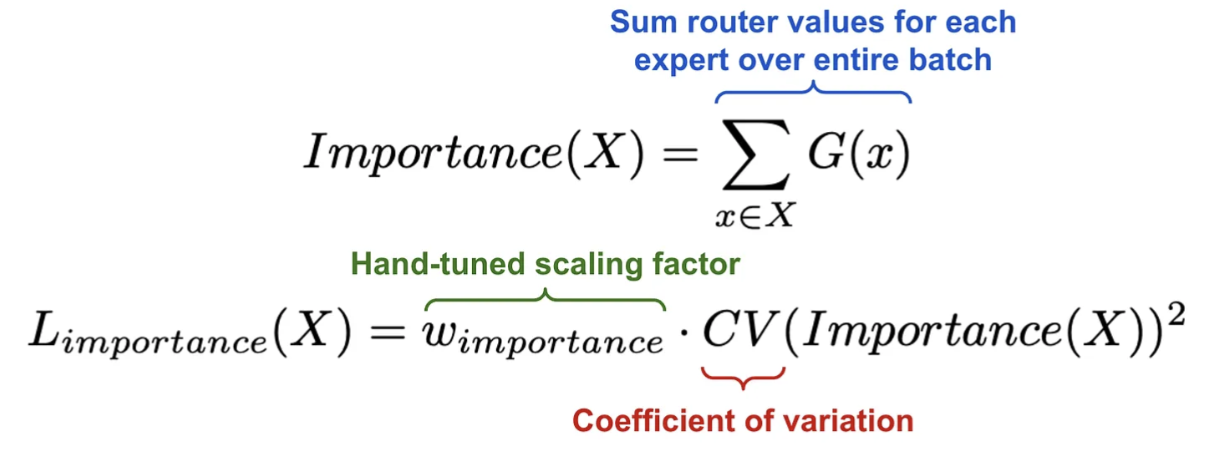
- (1) Expert 별로 importance(X)를 구함
- (2) 이들이 서로 고르게 되도록 유도하는 loss term
3. Token-choice routing의 한계점
한계점 3가지
- (1) Load imbalance
- (2) Under specialization
- (3) Same compute for every token
(1) Load imbalance
-
특정 expert에 대부분의 data가 몰리는 현상
(e.g., 일부 expert에 ~40%의 over-capacity ratio)
-
결과: 많은 데이터(token)이 drop됨
(2) Under specialization
- Reg loss를 통해, 억지로 적절하지 않은 expert에 할당되게 될 수도!
- 즉, loss는 최적화될지언정, under specialization 발생!
(3) Same compute for every token
- 기존의 routing strategy: 각 데이터에 모두 같은 수의 expert가 할당됨
\(\rightarrow\) 데이터의 complexity에 따라 서로 다른 computation을 가지는게 더 plausible!
4. Proposed: Expert Choice
역으로, Expert를 data에 할당하자!
-
(Before) 데이터 당 Top K개의 expert를 할당
-
(After) expert 당 Top K개의 데이터를 할당
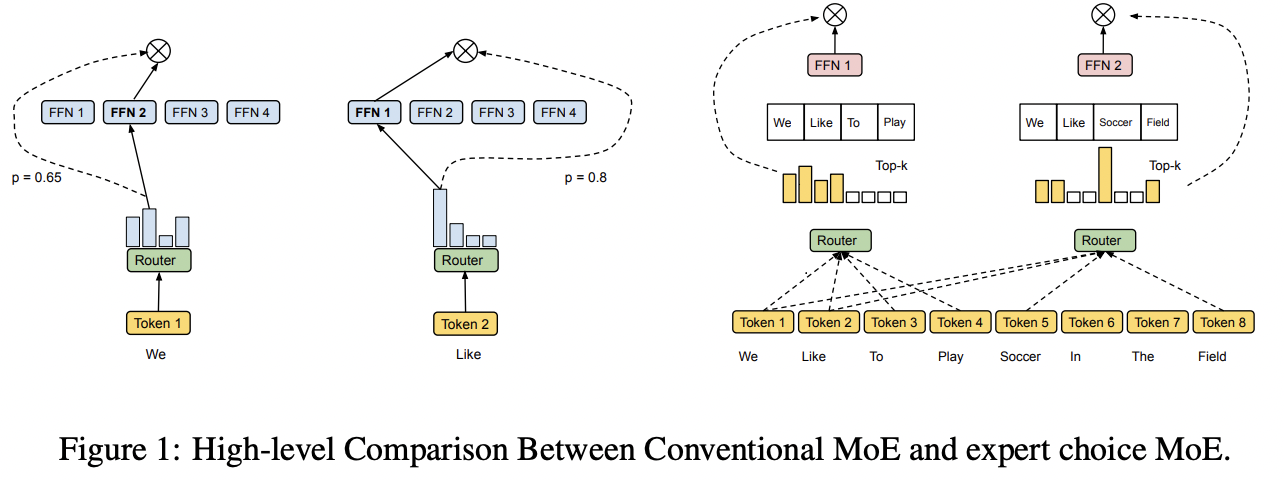
Notation
(Top \(k\)) \(k=\frac{n \times c}{e}\)
-
(1) \(n\): # of data(tokens) in input batch
- (batch size \(\times\) sequence length)
-
(2) \(c\): capacity factor
-
How many experts are utilized by a token
( Higher \(c\) \(\rightarrow\) More tokens are assigned! )
-
-
(3) \(e\): # of experts
Input token representations: \(X \in \mathbb{R}^{n \times d}\)
- where \(d\) is the hidden dimension
Token-to-expert assignment: \(I, G\) and \(P\).
- \(I\) : Index matrix
- \(I[i, j]\) : \(j\)-th selected token of the \(i\)-th expert.
- \(G \in \mathbb{R}^{e \times k}\): Gating matrix
- Weight of expert for the selected token
- \(P \in \mathbb{R}^{e \times k \times n}\): One-hot version of \(I\)
- Will be used to gather tokens for each expert.
Procedure
Step 1) Token-to-expert affinity scores
- 데이터 & Expert 사이의 유사도
- \(S=\operatorname{Softmax}\left(X \cdot W_g\right)\), where \(S \in \mathbb{R}^{n \times e}\)
Step 2) Gating matrix & one-hot matrix
- \(G, I=\operatorname{TopK}\left(S^{\top}, k\right)\), where \(P=\operatorname{Onehot}(I)\)
Step 3) Output of each expert
- \(X_e[i]=\operatorname{GeLU}\left(X_{i n}[i] \cdot W_1[i]\right) \cdot W_2[i]^{\top}\), where \(X_{\text {in }}=P \cdot X\).
Step 4) Total output
- \(X_{\text {out }}[l, d]=\sum_{i, j} P[i, j, l] G[i, j] X_e[i, j, d]\),
